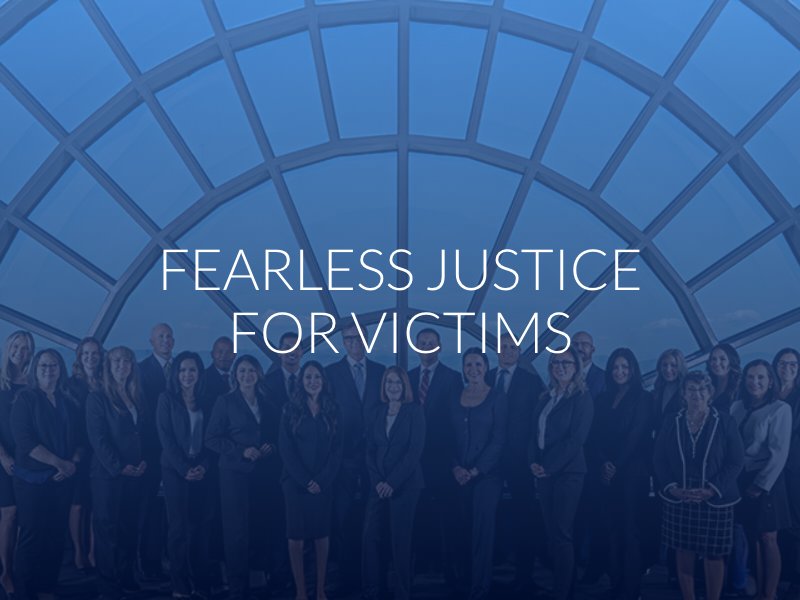Amusement parks are designed to be places where friends and families can enjoy themselves safely, but when parks prioritize profit over safety, parkgoers can face devastating consequences. Too often, companies put their bottom line ahead of safety, resulting in preventable injuries and wrongful deaths that devastate families. In such circumstances, families may choose to pursue personal injury or wrongful death lawsuits, not only to get justice for their losses, but also to compel corporations to implement the safety changes that should have been in place from the start.
This is why Dan Caplis Law fights for what they call “Fearless Justice.” Fearless Justice means asking juries to set aside outside pressures and do what is right, regardless of the size or influence of the corporations involved. In a landmark case, the firm secured a $205 million verdict on behalf of the Estifanos family after the tragic death of their six-year-old daughter, Wongel, at Glenwoods Caverns Adventure Park in Colorado. 
Reflecting on the verdict, Dan Caplis stressed that it was intended to create lasting change, not just provide compensation. “The whole purpose of the law in punitive damages is learn the lessons,” he says, “make the world safer, make sure this never happens again, and that’s been the parents’ quest since day one.”
When the verdict was read, Wongel’s parents broke down in tears and prayed. Beyond accountability, this verdict sends a message nationwide: amusement parks must prioritize safety or face the consequences. As Caplis told reporters, “When it gets too expensive to do it wrong, they’ll do it right. When it gets too expensive to do it dangerously, they’ll do it safely.”
Beyond compensation, this verdict ensures that Wongel’s tragedy will drive meaningful change, sending a clear message that public safety cannot be ignored.
Why Amusement Park Accidents Are Tragic
Amusement park incidents are often particularly devastating because they frequently involve children and families who trust that they are entering a safe environment. A day intended to create lasting memories can instead result in profound grief and loss. These tragedies are made even more painful by the fact that they are almost always preventable and tend to result in severe injuries.
Children are disproportionately affected, as many rides are designed specifically for families. When a child is injured or killed, the emotional and legal stakes are especially high. In most cases, accidents arise from lapses in design, inspection, maintenance, or operator training – not from unforeseeable events.
Injuries sustained in amusement park accidents can be severe and life-altering, including traumatic brain injury, spinal cord damage, fractures, internal organ trauma, or death. The impact extends far beyond medical costs, encompassing lifelong disability, pain and suffering, and the profound disruption of family life.
How Common Are Amusement Park Accidents?
Although amusement park deaths are rare compared to the millions of rides taken safely each year, they do happen, and often under circumstances that could have been prevented with the proper care and action. According to the International Association of Amusement Parks and Attractions (IAAPA), “the chance of being seriously injured on a fixed-site ride at a US amusement park is 1 in 15.5 million rides taken.” While accidents are rare, each incident that occurs represents a devastating injury or loss for families who trusted that the park’s safety protocols would be followed.
High profile tragedies underscore that fatal accidents continue to occur, even in modern, highly regulated parks. Some notable fatal accidents include:
- FreeFall ride at ICON Park, Orlando, FL
In 2022, 14-year-old Tyre Sampson died after falling 100 feet from the FreeFall ride, which lacked seat belts and failed to safely accommodate riders above the weight limit, highlighting preventable safety failures.
- Texas Giant roller coaster at Six Flag Over Texas, Arlington, TX
In 2019, 52-year-old Rose Ayala-Goana was fatally ejected from the Texas Giant roller coaster, falling 75 feet during a steep descent, raising questions about where her restraints properly fit and highlighting potential preventable safety features.
- Perilous Plunge water ride at Knott’s Berry Farm, Buena Park, CA
In 2001, 40-year-old Lori Mason-Larez died after falling from the Perilous Plunge water ride. With investigations suggesting her restraints could not safely secure her 292-pound frame, highlighting ongoing safety risks when rides are designed for average-sized riders without clear weight limits.
- Drop Zone free-fall tower at Paramount’s Great America (now California’s Great America), Santa Clara, CA
In 1999, 12-year-old Joshua Smurphat was killed after slipping from a safety harness on the Drop Zone free-fall tower, despite the harness reportedly locked, highlighting potential design and restrain failures on high-risk rides.
Some notable cases resulting in serious injury include:
- Ninja Roller Coaster at Six Flags Magic Mountain, Valencia, CA
In 2014, four riders sustained injuries when the Ninja roller coaster derailed after hitting a tree, demonstrating the dangers of mechanical failures and the need for rigorous ride maintenance.
- Big Thunder Mountain at Disneyland, Anaheim, CA
In 2003, one person was killed and 10 others were seriously injured when a section of the Big Thunder Mountain Railroad train derailed, illustrating how ride malfunctions can result in multiple serious injuries even in highly regulated parks.
- Canyon River Rapids Ride at Herseypark, Hershey, PA
In 1987 six riders were seriously injured when a raft overturned on the Canyon River Rapids water ride, highlighting the risks of water-based attractions and the importance of strict safety measures.
Who Can Be Held Liable?
When an amusement park accident occurs, liability can extend beyond just the ride operator pressing a button. Multiple parties play a role in ensuring rides are safe for families, and when one of those parties fails, the consequences can be tragic. Determining who is legally responsible often requires a detailed investigation into the ride’s design, maintenance, and day-to-day operation.
Manufacturers
Ride manufacturers may be held responsible if a design flaw, engineering failure, or inadequate testing creates an unreasonably dangerous ride. Manufacturers have a duty to anticipate risks, build effective restraint systems, and provide clear safety instructions. When they fail in these obligations, innocent riders can pay the price.
Park owners/operators
Ultimately, amusement park owners and operators are responsible for ensuring guest safety. Their duties include enforcing daily safety inspections, training staff thoroughly, and refusing to operate rides with known hazards. When owners prioritize profits or convenience over safety, they may be held liable for preventable tragedies.
Staff/operators
While individual employees may make mistakes, the liability usually falls on the park that hired, trained, and supervised them. Poor training programs, negligent supervision, or lack of proper hiring protocols (like background checks) can all create unsafe conditions. If an operator misuses restraints, overlooks safety warnings, or fails to follow procedures, it often reflects systemic negligence on the part of management.
Third-party contractors/vendors
Amusement parks frequently rely on outside companies to design, inspect, or maintain rides. Contractors who cut corners or fail to identify hazardous conditions may be held liable if their negligence contributes to an accident. Every party involved in maintaining rides has a legal duty to keep riders safe.
In Wongel Estifanos’s case, investigators identified multiple failures, from operator errors to deficient restraints, that combined to create a deadly scenario. This tragedy highlights the importance of holding manufacturers, park owners, and those responsible for training and oversight accountable, as liability can be spread across multiple parties, making thorough legal action essential to ensure every negligent party is held accountable.
How Dan Caplis Law Helps Families Nationwide
The $205 million verdict in Wongel Estifanos’s case is one of the largest amusement park verdicts in US history. It demonstrates not only the heartbreak of one family’s story but also the power of Fearless Justice in holding corporations accountable.
Dan Caplis Law fights for families across the nation, not just in Colorado. With decades of experience handling complex wrongful death and catastrophic injury cases, the firm has the resources and determination to take on powerful corporations and win.
When families face unimaginable tragedy, they deserve a legal team willing to ask juries for Fearless Justice. That is what Dan Caplis Law delivers: justice that is not swayed by money, influence, or fear, but guided by what is right.




